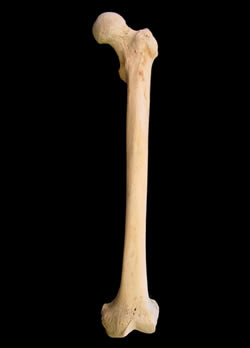Difference between Fossil and Bone
Key Difference: Bones are an intricate part of the body. Most creatures have bones in their body, and all animals definitely have bones. Bones make up the skeletal system of the body, which serves a variety of functions. A fossil, on the other hand, is the preserved remains or traces of animals, plants, and other organisms from the remote past.

Bones are an intricate part of the body. Most creatures have bones in their body, and all animals definitely have bones. Bones make up the skeletal system of the body, which serves a variety of functions. The bones are made up of a hard and rigid tissue. Bones together form a major part of the vertebral skeleton that helps give the body a structure.
Bones serve a variety of functions, including helping the body stay up, move and function the way that it does. Bones also act as a surface for the muscles and tendons to attach. Bones also contain bone marrow where red blood cells and while blood cells are produced. In addition, bones also act to protect the organs such as heart, brain, lungs, and many more.
At the time of birth, a human is born with over 270 different bones. However, over the stages of development, many of these bones fuse together leaving a human adult with a total of 206 bones.
A fossil, on the other hand, is the preserved remains or traces of animals, plants, and other organisms from the remote past. The term ‘fossils’ comes from the Classical Latin ‘fossilis’, which literally translates as "obtained by digging." Whenever someone thinks of a fossil, the person would probably immediately picture an archeologist or paleontologist brushing the dirt away from a piece of bone or stone.
 There are two main types of fossils: body fossils and trace fossils. Body fossils can include bones, calcified bones, etc. Whereas, trace fossils are traces and remains that the creatures have left behind. This can include marks, animal tracks or feces.
There are two main types of fossils: body fossils and trace fossils. Body fossils can include bones, calcified bones, etc. Whereas, trace fossils are traces and remains that the creatures have left behind. This can include marks, animal tracks or feces.
Fossils serve an important function; they allow one to study and learn how the organisms probably looked, how they lived, what they ate, how they died, etc., as well as how long ago they lived. This is done via carbon dating or by figuring out where the fossil was placed between the rock formations and sedimentary layers of the earth. Fossils also help scientists understand the organism’s relationship to other organisms as well trace their modern descendants, and figure out how the evolution took place.
Comparison between Fossil and Bone:
|
|
Fossil |
Bone |
|
Description |
A fossil is the preserved remains or traces of animals, plants, and other organisms from the remote past. |
A bone is a rigid organ that forms part of the vertebral skeleton. |
|
Types |
Body fossils and trace fossils. Body fossils can include bones, calcified bones, etc. Trace fossils are traces and remains that the creatures have left behind. This can include marks, animal tracks or feces. |
Bones are of two types: compact or spongy. They are also classified into long, short, flat, irregular, sesamoid and sutural bones. |
|
Function |
Fossils serve an important function; they allow one to study and learn how the organisms probably looked, how they lived, what they ate, how they died, etc., as well as how long ago they lived. This is done via carbon dating or by figuring out where the fossil was placed between the rock formations and sedimentary layers of the earth. Fossils also help scientists understand the organism’s relationship to other organisms as well trace their modern descendants, and figure out how the evolution took place. |
Protect the body against mechanical damage, assist in the movement of the body, provide a framework and shape for the body, store minerals, and produce red blood and white blood cells. |
Image Courtesy: 39clues.wikia.com, geology.com









Add new comment